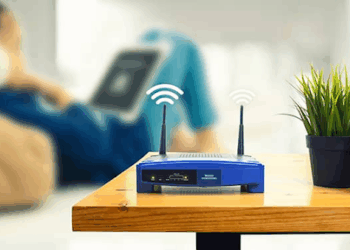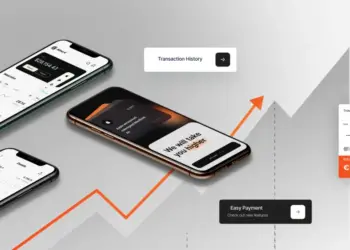Navigating the New Landscape of Android Sideloading
The recent Google Play update has brought several changes to the Android ecosystem, especially in the way users sideload apps. Sideloading, which refers to installing apps from sources other than the official Google Play Store, has always been a popular option for those seeking apps not available through official channels. However, with the new update, the process has become more intricate, requiring users to navigate additional steps and understand new security measures. This guide will walk you through the updated process of sideloading Android apps and highlight important considerations to keep in mind.
The Impact of the Google Play Update
The latest Google Play update aims to enhance security and protect users from potentially harmful applications. This update includes stricter verification processes and additional permissions requirements, making it more challenging to install apps from unknown sources. While these measures are beneficial for user safety, they also pose challenges for those who rely on sideloading for various reasons.
The update has introduced changes in app installation protocols, emphasizing the need for users to verify app sources and permissions. Understanding these changes is crucial for successfully sideloading apps while maintaining device security.
Why Sideloading is Still Relevant
Despite the new hurdles, sideloading remains relevant for several reasons. Many users prefer sideloading to access apps that are unavailable in their region, try out beta versions, or use apps removed from the Play Store. For developers, sideloading provides a way to distribute apps directly to users without relying on the Play Store, offering greater control over app distribution.
Moreover, custom mobile app development services often recommend sideloading as a method to test applications in real-world scenarios before their official release. This approach allows for thorough testing and feedback, ensuring a more polished product when it finally hits the Play Store.
Preparing Your Device for Sideloading
Before you can sideload apps, you need to prepare your device by adjusting some settings. This preparation involves enabling the installation of apps from unknown sources, which is typically disabled by default to protect users from malicious software.
- Enable Developer Options: Go to your device’s settings, navigate to “About Phone,” and tap on the build number seven times to enable developer options.
- Allow Installation from Unknown Sources: In the developer options menu, find and enable the “Install unknown apps” option for the browser or file manager you will use to download the APK files.
These steps are essential for sideloading apps on your device, and ensuring they are done correctly will prevent installation errors later on.
Downloading APK Files Safely
Downloading APK files from trusted sources is crucial to avoid malware and other security threats. Stick to reputable websites known for hosting safe APK files, and always read user reviews and check ratings before downloading.
- Research Trusted Sources: Websites like APKMirror, APKPure, and official developer sites are reliable sources for APK files.
- Verify File Authenticity: After downloading, use tools like VirusTotal to scan the APK file for any potential threats before installing it on your device.
By following these steps, you can minimize the risk of downloading harmful applications and ensure a safer sideloading experience.
Installing APK Files on Your Device
Once you’ve downloaded the APK file, the installation process is straightforward but requires careful attention to permissions and settings.
- Locate the APK File: Use your device’s file manager to find the downloaded APK file, usually stored in the “Downloads” folder.
- Install the APK: Tap on the APK file and follow the on-screen prompts to install it. You may need to grant additional permissions during the installation process.
Pay attention to the permissions requested by the app during installation. If an app requests unnecessary permissions, it might be a red flag indicating potential security risks.
Managing App Permissions
After installing the app, managing its permissions is crucial to ensure it doesn’t access sensitive data or functions unnecessarily. Android allows you to control app permissions both during and after installation.
- Review Permissions: Go to your device’s settings, navigate to “Apps,” and select the newly installed app. Review the permissions it has and adjust them as needed.
- Use Permission Manager: Android’s built-in permission manager allows you to see which apps have access to specific permissions, making it easier to control and revoke access as needed.
Regularly reviewing app permissions helps maintain your device’s security and ensures apps only access what they need to function.
Updating Sideloaded Apps
Unlike apps from the Google Play Store, sideloaded apps don’t automatically update. Keeping these apps up-to-date requires manual intervention to ensure they continue to function correctly and stay secure.
- Check for Updates: Regularly visit the source from which you downloaded the APK file to check for updates.
- Install Updates Manually: Download the updated APK file and install it over the existing version, following the same steps outlined for the initial installation.
Staying vigilant about updates helps maintain app performance and security, protecting your device from vulnerabilities.
Troubleshooting Common Issues
Sideloading apps can sometimes lead to issues such as installation errors or app crashes. Understanding common problems and their solutions can help you troubleshoot effectively.
- Installation Errors: If you encounter an installation error, ensure that you’ve enabled the installation from unknown sources and that the APK file is not corrupted.
- App Crashes: If a sideloaded app crashes frequently, check for compatibility issues or conflicting apps. Reinstalling the app or seeking an updated version can often resolve these issues.
Being prepared to troubleshoot ensures a smoother sideloading experience and helps you resolve issues promptly.
Leveraging Custom Mobile App Development:
For businesses and developers, custom mobile app development services offer a strategic advantage in the sideloading process. These services provide expertise in creating and distributing apps tailored to specific needs, ensuring high performance and user satisfaction.
- Professional Development: Custom mobile app development services can create high-quality apps designed to meet your unique requirements, enhancing functionality and user experience.
- Distribution Strategies: These services also offer strategies for effective app distribution, including sideloading techniques that ensure your app reaches the intended audience efficiently.
Partnering with a professional development service can streamline the sideloading process and provide valuable support in maintaining and updating your apps.
Conclusion:
The recent Google Play update has certainly changed the way we sideload apps, but with the right knowledge and tools, it remains a viable and valuable option. By understanding the new requirements, preparing your device properly, and following best practices for downloading, installing, and managing apps, you can continue to enjoy the benefits of sideloading.
Whether you’re a user looking to explore apps beyond the Play Store or a developer seeking to distribute your creations more widely, staying informed and vigilant is key to navigating the new sideloading landscape successfully.













